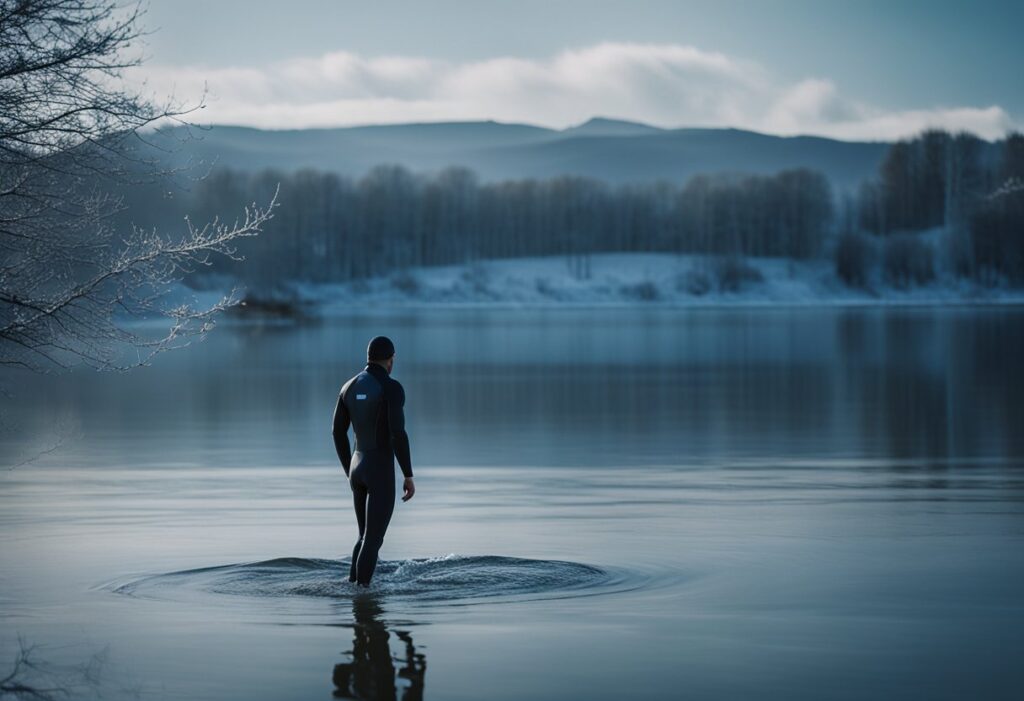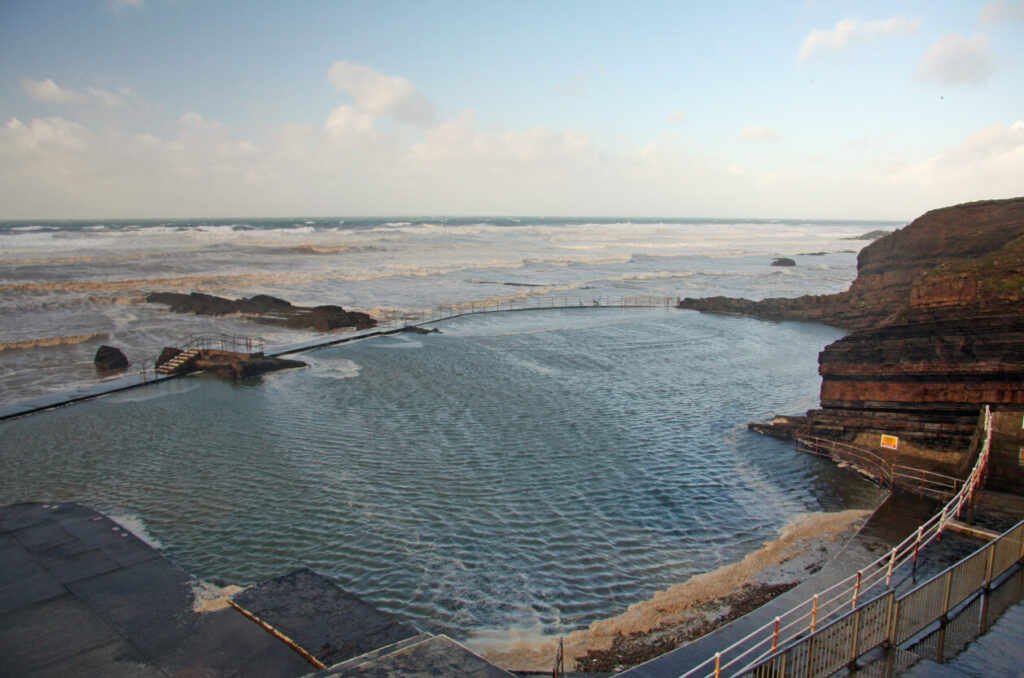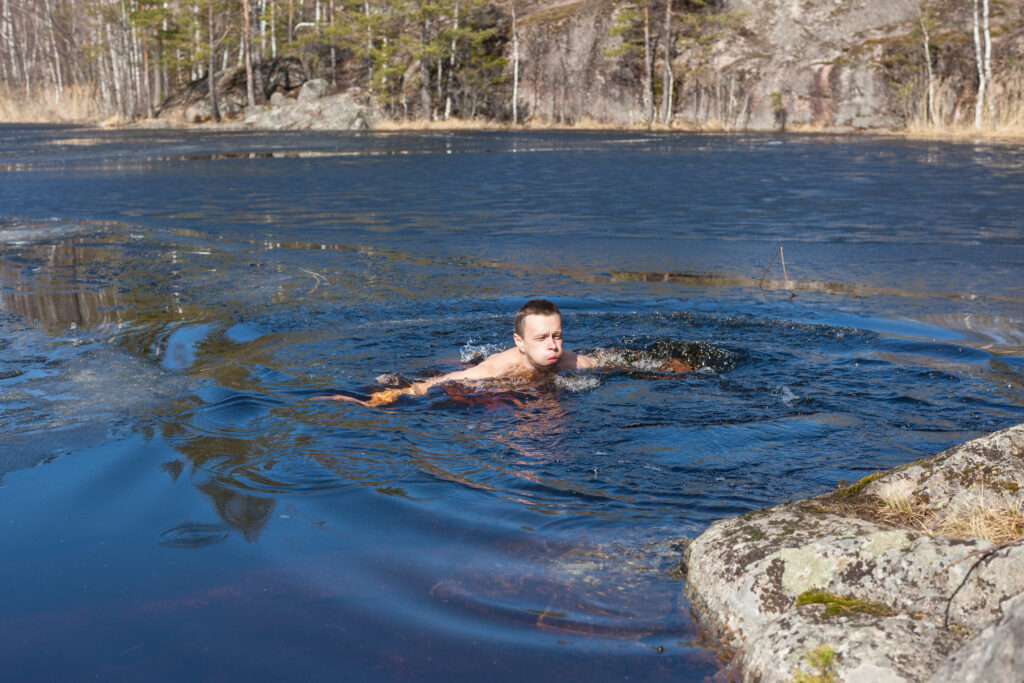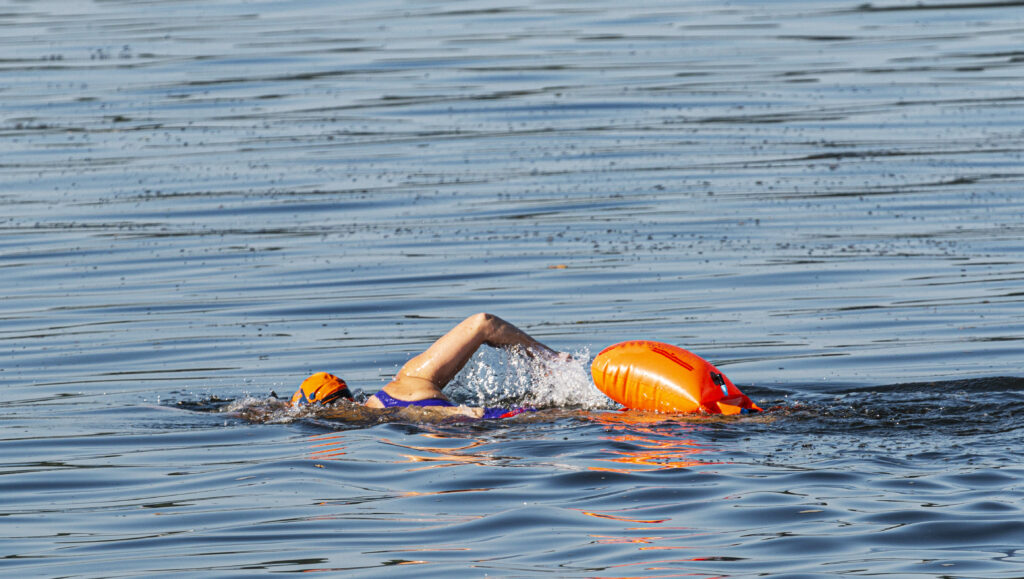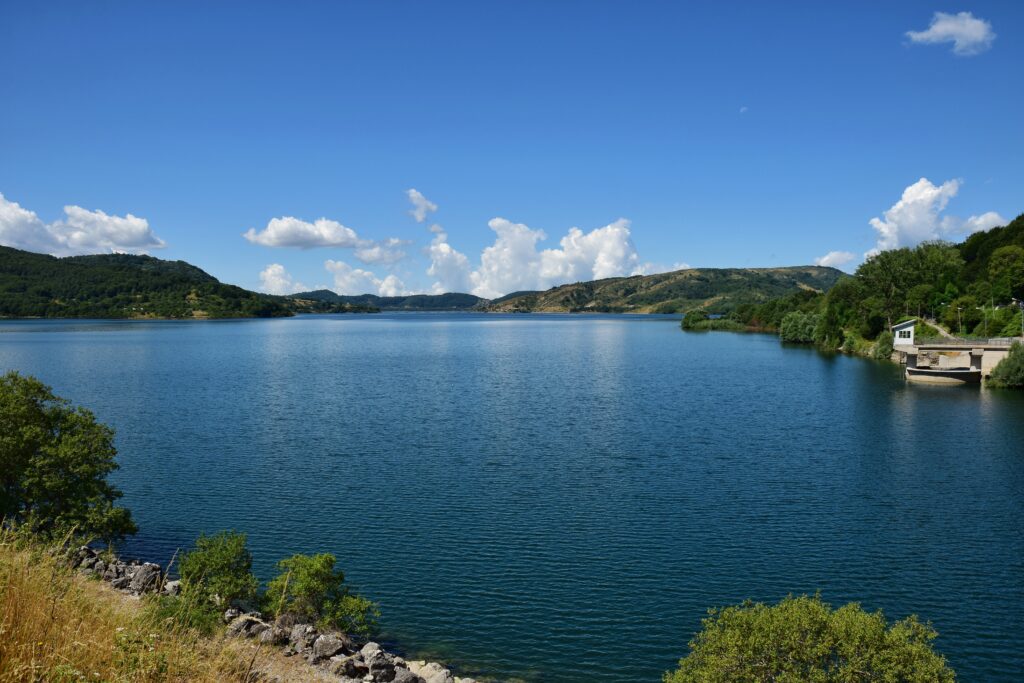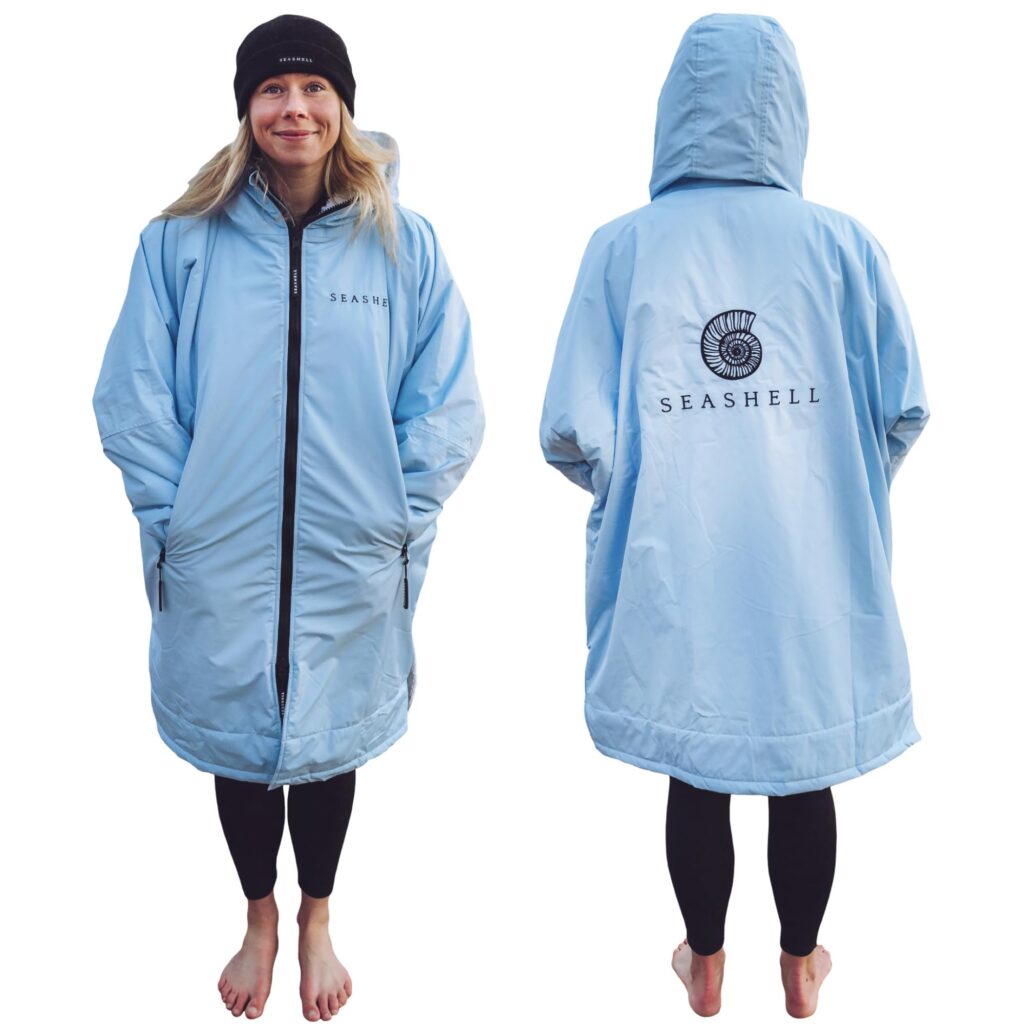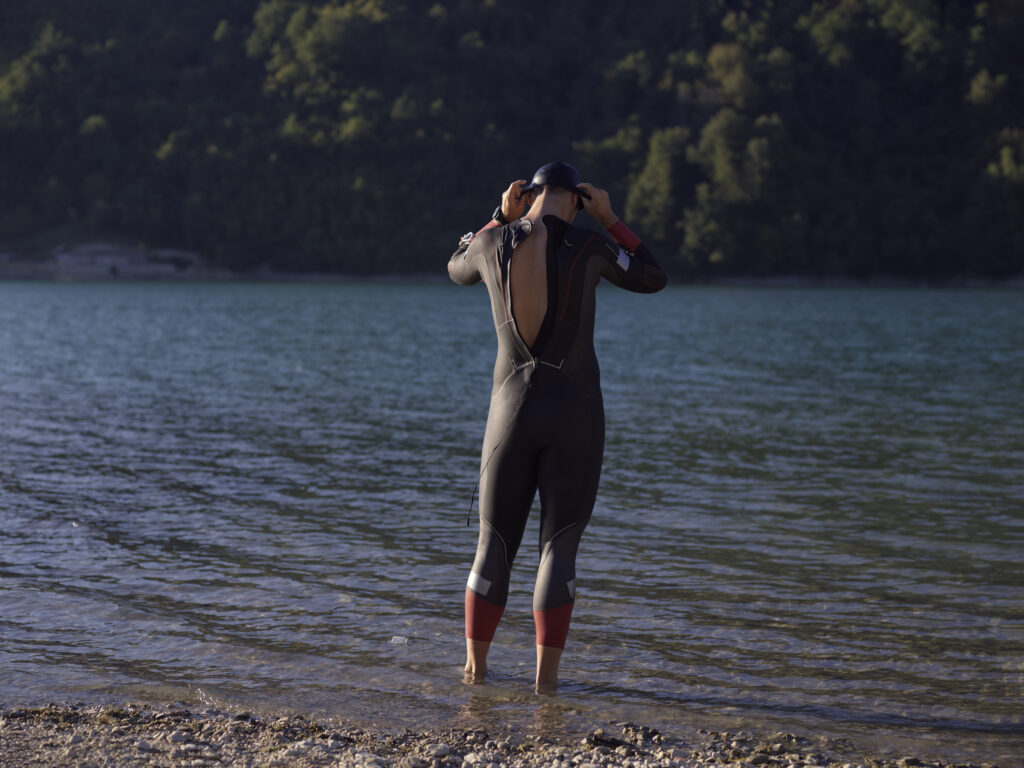Winter open water swimming can be a daunting prospect for many swimmers, but it can also be an exhilarating experience. However, with colder water temperatures, it’s important to consider the right gear to stay safe and comfortable. One of the most important pieces of gear for winter open water swimming is a wetsuit. But are long wetsuits a must-have for this activity?

Wetsuits are designed to keep the body warm by trapping a thin layer of water between the skin and the suit. This layer of water is then warmed by the body’s natural heat, creating a barrier against the cold water. In winter, water temperatures can drop to dangerously low levels, making a wetsuit an essential piece of gear for open water swimmers. However, the length of the wetsuit can vary, with some swimmers opting for a full-length suit, while others choose a shorty wetsuit or even just a rash vest.
While a long wetsuit can offer more protection from the cold water, it may not be necessary for all swimmers. The decision to wear a long wetsuit will depend on a number of factors, including the individual’s tolerance for cold water, the length of time they plan to spend in the water, and the water temperature. Ultimately, the decision to wear a long wetsuit will come down to personal preference and the conditions of the swim.
The Importance of Wetsuits for Winter Open Water Swimming
When it comes to winter open water swimming, the use of long wetsuits is essential for maintaining body temperature and ensuring safety. Wetsuits play a crucial role in providing thermal insulation, safety, and protection against the cold elements.
Temperature Regulation and Insulation
Wetsuits are designed to trap a thin layer of water between the suit and the skin, which is then warmed by body heat. This layer acts as an insulator, preventing rapid heat loss and helping to regulate body temperature in cold water. By retaining body heat, wetsuits enable swimmers to stay comfortable and maintain their core temperature during winter open water swims.
Safety and Protection
In addition to thermal insulation, wetsuits offer an extra layer of buoyancy, aiding in flotation and reducing the risk of hypothermia. They also provide protection against abrasions and minor injuries that may occur while navigating through open water environments. Furthermore, the visibility of wetsuits enhances safety by making swimmers more noticeable to other water users and support personnel, thereby reducing the risk of accidents.
In conclusion, the use of long wetsuits is a must for winter open water swimming, as they are instrumental in maintaining warmth, ensuring safety, and providing protection in cold water environments.
Understanding Wetsuit Materials and Construction
Neoprene and Alternative Materials
Wetsuits are made of neoprene, a synthetic rubber material that is waterproof and insulating. The thickness of the neoprene used in a wetsuit determines the level of insulation it provides. For winter open water swimming, a thicker wetsuit is recommended to keep the swimmer warm. According to SRFACE®, a 5/4 mm wetsuit is ideal for water temperatures around 8~10°C.
Alternative materials to neoprene, such as Yulex, are becoming more popular due to their sustainability. Yulex is a plant-based alternative to neoprene that is made from natural rubber. It provides similar insulation to neoprene and is a great alternative for those looking to reduce their environmental impact.
Seams and Surface Treatments
The construction of a wetsuit is just as important as the materials used. Seams and surface treatments can affect the durability and warmth of the wetsuit.
The most common type of seam used in wetsuits is flatlock stitching. This type of stitching is flexible and durable, but it allows water to seep through the seams. For winter open water swimming, a wetsuit with glued and blind-stitched seams is recommended. This type of seam is waterproof and provides better insulation.
Surface treatments, such as liquid tape, can also improve the waterproofing of a wetsuit. Liquid tape is a type of glue that is applied to the seams of a wetsuit to prevent water from seeping through. Some wetsuits also have a smooth skin surface treatment, which reduces drag and improves insulation.
In summary, neoprene thickness, alternative materials, seams, and surface treatments are all important factors to consider when choosing a wetsuit for winter open water swimming. A thicker wetsuit with glued and blind-stitched seams and surface treatments such as liquid tape can provide the necessary insulation and waterproofing for a comfortable and safe swim.
Selecting the Right Wetsuit Fit and Features

When it comes to winter open water swimming, selecting the right wetsuit is crucial for staying warm and comfortable. Here are some things to consider when selecting a wetsuit:
Sizing and Fit for Optimal Performance
A well-fitting wetsuit is essential for optimal performance in the water. A wetsuit that is too loose will allow water to seep in, making the swimmer cold and uncomfortable. On the other hand, a wetsuit that is too tight will restrict movement and make it difficult to swim.
To ensure a proper fit, swimmers should measure themselves and refer to the manufacturer’s sizing chart. The wetsuit should fit snugly but not be constricting. It should allow for a full range of motion in the arms, legs, and torso.
Key Features for Mobility and Comfort
In addition to the right fit, there are several key features that swimmers should look for in a wetsuit to ensure mobility and comfort. These include:
- Ankle and wrist seals: The wetsuit should have seals around the ankles and wrists to prevent water from entering and keep the swimmer warm.
- Neck seal: The neck seal should be snug but not too tight to prevent water from entering the wetsuit.
- Shoulder and back panels: These panels should be made from a flexible material to allow for a full range of motion in the arms and shoulders.
- Torso fit: The wetsuit should fit snugly around the torso to provide warmth and prevent water from entering.
- Knee panels: The knees are a common area for wetsuits to wear out quickly, so swimmers should look for reinforced knee panels for durability.
By considering these factors, swimmers can select a wetsuit that will keep them warm, comfortable, and mobile during winter open water swimming.
Additional Wetsuit Accessories for Open Water Swimming

Gloves, Boots, and Hoods for Extra Warmth
Long wetsuits can provide a great deal of warmth, but sometimes they may not be enough, especially during the winter season. In such cases, gloves, boots, and hoods can be a great addition to keep the body warm. Gloves and boots made of neoprene material are a popular choice for open water swimmers. Neoprene is known for its insulating properties and can keep the hands and feet warm even in cold water. Some wetsuits come with built-in gloves and boots, but they can be restrictive and may not fit everyone perfectly. Therefore, buying separate gloves and boots is a good option.
Hoods are another accessory that can help maintain body temperature. They cover the head and ears and prevent heat loss from the head. Some hoods come with a chin strap to keep them in place during swimming. It is essential to choose a hood that fits snugly and does not impede vision.
Goggles and Other Essential Gear
Apart from wetsuits and accessories, goggles are an essential piece of gear for open water swimming. Goggles protect the eyes from water, wind, and sun, and also improve visibility. It is recommended to choose goggles with a silicone seal, as they provide a comfortable and secure fit. Tinted or mirrored lenses can help reduce glare and improve visibility in bright sunlight.
Other essential gear includes swim caps and earplugs. Swim caps help keep the head warm and reduce drag, while earplugs prevent water from entering the ears and causing discomfort or infection. It is important to choose earplugs that fit well and do not fall out during swimming.
In conclusion, while long wetsuits are a must-have for winter open water swimming, additional accessories such as gloves, boots, hoods, goggles, swim caps, and earplugs can provide extra warmth and comfort. It is important to choose accessories that fit well and are made of high-quality materials. With the right gear, open water swimming can be a safe and enjoyable experience even in cold water.
Adapting to Open Water Conditions

When it comes to open water swimming, conditions can vary greatly depending on the location, time of year, and weather. Adapting to these conditions is crucial for a safe and successful swim.
Navigating Natural Elements and Wildlife
One of the challenges of open water swimming is navigating natural elements and wildlife. Swimmers should be aware of any debris in the water, such as logs or branches, and avoid swimming near them to prevent injury. It is also important to be aware of birds in the area, as they may be nesting or feeding and could become aggressive towards swimmers.
Dealing with Competitors and Crowds
Another challenge of open water swimming is dealing with competitors and crowds. Swimmers should be aware of other swimmers in the area and avoid collisions by swimming in a straight line and keeping a safe distance from other swimmers. In crowded areas, it may be necessary to slow down or stop to avoid collisions.
In addition to these challenges, open water swimmers must also be prepared for changes in water temperature. In colder water, a long wetsuit may be necessary to stay warm and prevent hypothermia. However, it is important to choose a wetsuit that is appropriate for the water temperature and complies with any regulations for the event.
Overall, adapting to open water conditions requires a combination of knowledge, skill, and preparation. Swimmers should be aware of the natural elements and wildlife in the area, as well as any competitors or crowds. By taking these factors into account and preparing accordingly, swimmers can have a safe and successful open water swim.
Training and Technique Considerations

Improving Efficiency and Speed in a Wetsuit
Wearing a wetsuit can have a significant impact on a swimmer’s efficiency and speed in open water. While the extra buoyancy provided by a wetsuit can help to reduce drag and improve swim times, it can also require some adjustments to technique and training.
One key consideration is body position. Swimmers should aim to maintain a streamlined position in the water, with their head down and hips high. This can help to reduce resistance and improve speed. Additionally, swimmers should focus on maintaining a smooth, efficient stroke, avoiding any unnecessary movements or wasted energy.
Another important factor is training. Swimmers should aim to include regular open water swim sessions in their training programme, to help them acclimatise to the conditions and develop their technique. This can also help to build endurance and reduce the risk of fatigue during longer swims.
Acclimatising to Cold Water and Wetsuit Use
For winter open water swimming, a wetsuit can provide essential protection against the cold water temperatures. However, it can also take some time to get used to wearing a wetsuit, particularly if a swimmer is not used to swimming in one.
To help with acclimatisation, swimmers should aim to gradually increase the amount of time they spend in the water wearing their wetsuit. They can also try using a neoprene cap and gloves to provide additional insulation. It is important to note that swimming in cold water can be dangerous, and swimmers should always take appropriate safety precautions and seek advice from a qualified coach or medical professional if unsure.
Overall, while a wetsuit can provide significant benefits for winter open water swimming, it is important for swimmers to consider the impact on their technique and training, and to take appropriate steps to acclimatise to the conditions.
Wetsuit Regulations and Choices for Competitors

FINA Wetsuit Rules for Competitive Swimming
The International Swimming Federation (FINA) regulates wetsuits for competitive swimming events. According to their guidelines, wetsuits are mandatory when the water temperature is below 16°C and prohibited when it is above 31°C. Between 16°C and 31°C, competitors have the option to wear wetsuits or not.
However, it is important to note that these guidelines apply to competitive swimming events only. For recreational open water swimming, there are no strict regulations on wetsuit use. Swimmers are free to choose whether or not to wear a wetsuit depending on their personal preference and the water temperature.
Triathlon-Specific Wetsuit Considerations
Triathletes have additional considerations when choosing a wetsuit. Triathlon-specific wetsuits are designed to provide buoyancy and reduce drag, which can help improve performance in the water. However, they must also be easy to remove quickly during the transition to the cycling and running stages of the race.
When choosing a wetsuit for triathlon, triathletes should consider the water temperature, the length of the race, and their individual swimming ability. For example, a thicker wetsuit may provide more warmth but could also restrict arm movement, making it harder to swim efficiently.
Ultimately, the choice to wear a wetsuit for winter open water swimming depends on personal preference, the water temperature, and the individual’s swimming ability. Swimmers should consider the FINA guidelines for competitive events and the specific needs of triathlon racing when selecting a wetsuit.
Evaluating Wetsuit Brands and Suppliers
Popular Brands and Their Offerings
When it comes to choosing a wetsuit for winter open water swimming, there are several popular brands that offer a wide range of options. Some of the most well-known brands include HUUB, Orca, and Zone 3.
HUUB is a popular brand that offers a variety of wetsuits designed specifically for open water swimming. Their wetsuits are known for their high-quality materials and innovative designs, such as the HUUB Archimedes II, which features a unique 3:5 buoyancy ratio that helps swimmers maintain the optimal body position in the water.
Orca is another popular brand that offers a range of wetsuits for all levels of swimmers. Their wetsuits are known for their flexibility and comfort, with many models featuring Yamamoto neoprene and SCS coating for maximum buoyancy and warmth.
Zone 3 is also a well-known brand that offers a variety of wetsuits for open water swimming. Their Zone 3 Aspire wetsuit is a popular choice among swimmers, featuring Yamamoto neoprene and a 5mm buoyancy panel on the hips and legs for optimal body position and buoyancy.
Factors Affecting Wetsuit Costs and Value
When evaluating wetsuits, it’s important to consider not only the brand and model but also the cost and value of the wetsuit. Factors that can affect the cost of a wetsuit include the materials used, the level of buoyancy, and the overall design and construction.
Budget wetsuits can be a good option for those just starting out with open water swimming or those on a tight budget. These wetsuits are typically made with less expensive materials and may not have all the features of higher-end wetsuits, but they can still provide adequate warmth and buoyancy for winter swimming.
For those looking for the best wetsuits for winter open water swimming, it’s important to consider the overall value of the wetsuit. This includes not only the cost but also the quality of the materials, the level of buoyancy, and the overall design and construction. By carefully evaluating these factors, swimmers can find the best wetsuit for their needs and budget.
Sustainable Practices in Wetsuit Manufacturing
Eco-Friendly Materials and Production
As more and more people become environmentally conscious, the demand for eco-friendly wetsuits has increased. Sustainable wetsuit manufacturing involves the use of eco-friendly materials such as Yulex, a plant-based alternative to neoprene. Yulex is made from natural rubber and is carbon neutral, making it a more sustainable option than traditional neoprene. Manufacturers such as Patagonia and Vissla have already started using Yulex in their wetsuits.
Another eco-friendly material used in wetsuit manufacturing is limestone neoprene. It is made from calcium carbonate extracted from limestone and processed into neoprene. This material is less harmful to the environment than traditional neoprene, which is made from petroleum.
Wetsuit manufacturers are also adopting sustainable production practices. Many are using recycled materials in their wetsuits. For example, some wetsuits are made from recycled plastic bottles. Additionally, some manufacturers are using water-based adhesives instead of toxic solvent-based adhesives.
Options for Wetsuit Hire and Recycling
Another sustainable practice is wetsuit hire. This allows swimmers to rent wetsuits for a specific period instead of buying them. This reduces the need for new wetsuits and helps to reduce waste. Some companies offer wetsuit hire services, and this option can be more cost-effective than buying a new wetsuit.
Wetsuit recycling is also becoming more common. Wetsuits can be recycled into other products such as yoga mats, car seat covers, and laptop sleeves. Some wetsuit manufacturers have recycling programs in place, and some outdoor stores offer wetsuit recycling services.
In conclusion, sustainable wetsuit manufacturing involves the use of eco-friendly materials and production practices. Yulex and limestone neoprene are sustainable alternatives to traditional neoprene, and water-based adhesives are a more eco-friendly option. Wetsuit hire and recycling are also sustainable options that can help to reduce waste.
Frequently Asked Questions

What features should I look for in a wetsuit for winter open water swimming?
When choosing a wetsuit for winter open water swimming, there are several features to look for to ensure maximum warmth. A wetsuit with a high neck and long sleeves will provide better insulation for the upper body. Additionally, a wetsuit with a hood will help to keep your head and neck warm. Look for wetsuits made with neoprene, which is a material that provides excellent thermal protection.
How does wetsuit thickness affect thermal protection in cold water?
The thickness of a wetsuit affects its thermal protection in cold water. Thicker wetsuits provide more insulation and are better suited for colder water temperatures. For winter open water swimming, a wetsuit between 5mm and 7mm thick is recommended. However, it is important to note that thicker wetsuits can also restrict movement and make it more difficult to swim.
Can you recommend the top wetsuit brands for open water swimming in the UK?
There are several top wetsuit brands for open water swimming in the UK. Some of the most popular brands include Zone3, Orca, and Huub. These brands offer a range of wetsuits for different water temperatures and budgets. It is important to try on wetsuits from different brands to find the one that fits you best.
What are the benefits of a full-length wetsuit compared to a shortie for cold water swims?
A full-length wetsuit provides better insulation and coverage than a shortie wetsuit for cold water swims. Full-length wetsuits cover the entire body, including the arms and legs, and provide maximum thermal protection. Shortie wetsuits, on the other hand, only cover the torso and upper legs, leaving the arms and lower legs exposed to the cold water.
How do I choose the right size wetsuit for open water swimming to ensure maximum warmth?
Choosing the right size wetsuit is crucial for ensuring maximum warmth during open water swimming. A wetsuit that is too loose will allow water to seep in, while a wetsuit that is too tight will restrict movement and circulation. It is important to refer to the manufacturer’s size chart and try on different sizes to find the one that fits you best.
Are there specific wetsuits designed for women that provide better insulation for winter swimming?
Yes, there are specific wetsuits designed for women that provide better insulation for winter swimming. Women’s wetsuits are designed with a different fit and shape than men’s wetsuits, providing better insulation and comfort. Some brands, such as Zone3 and Orca, offer women-specific wetsuits with added thermal protection in key areas.

